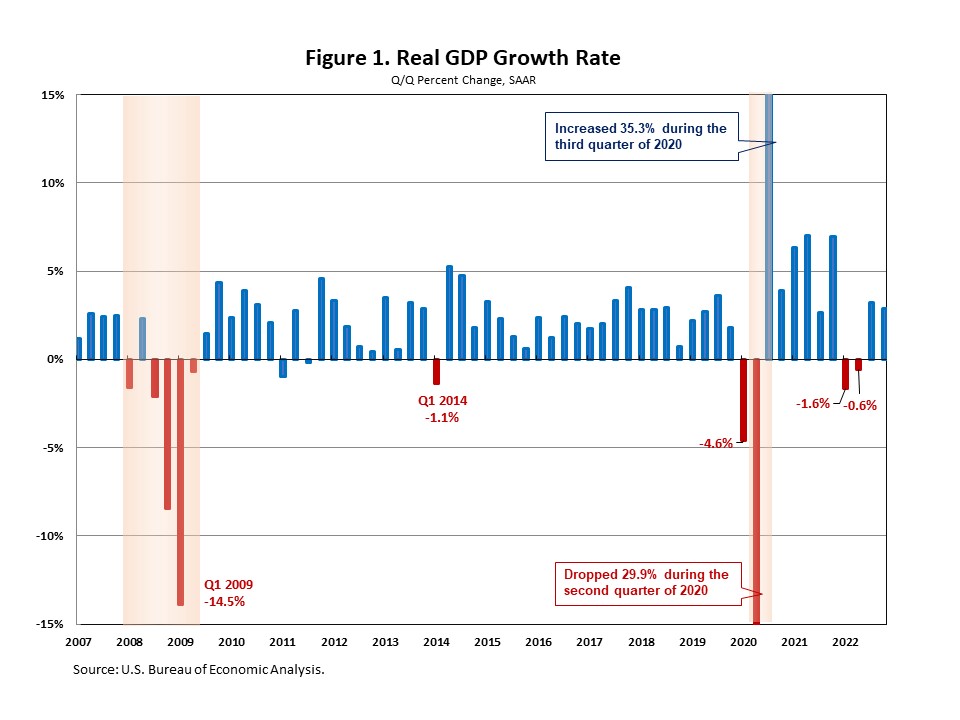The U.S. economy continued to grow in the fourth quarter of 2022. As consumer spending and private inventory investment helped increase GDP, residential fixed investment dragged down the contribution to percent change in real GDP by 1.29 percentage points.
More importantly, the data from the GDP report suggests that inflation is cooling. The GDP price index, rose 3.5% for the fourth quarter, down from a 9.0% increase in the second quarter and a 4.4% increase in the third quarter. Also, the Personal Consumption Expenditures (PCE) price Index, capturing inflation (or deflation) across a wide range of consumer expenses and reflecting changes in consumer behavior, rose 3.2% in the fourth quarter, compared with a 7.5% increase in the first quarter of 2022. Looking forward, only a mild recession is expected for this cycle due to the Federal Reserve tightening financial conditions.
According to the “advance” estimate released by the Bureau of Economic Analysis (BEA), real gross domestic product (GDP) increased at an annual rate of 2.9% in the fourth quarter, following a 3.2% increase in the third quarter. In 2022, real GDP contracted in the first half and then rebounded. For the full year, real GDP increased 2.1% in 2022, down from a 5.9% increase in 2021 and slightly better than NAHB’s forecast of 1.9%.

This quarter’s increase reflected increases in private inventory investment, consumer spending,
government spending, and nonresidential fixed investment, partially offset by decreases in residential fixed investment and exports.
The increase in private inventory investment was led by manufacturing as well as mining, utilities, and construction industries.
Consumer spending rose at an annual rate of 2.1% in the fourth quarter, reflecting increases in both services and goods. While expenditures on services increased 2.6% at an annual rate, goods spending increased 1.1% at an annual rate, led by motor vehicles and parts (+7.4%).
Meanwhile, federal government spending increased 6.2% in the fourth quarter, led by an increase in nondefense spending, while state and local government spending rose 2.3%, led by an increase in compensation of state and local government employees.
The deceleration in real GDP in the fourth quarter mainly reflected a downturn in exports and decelerations in nonresidential fixed investment, state and local government spending and consumer spendings.

Nonresidential fixed investment increased 0.7% in the fourth quarter. An increase in intellectual property products was partly offset by a decrease in equipment. Additionally, residential fixed investment (RFI) decreased 26.7% in the fourth quarter. This was the seventh consecutive quarter for which RFI subtracted from the headline growth rate for overall GDP. Within residential fixed investment, single-family structures declined 26.7% at an annual rate, multifamily structures rose 17.3% and other structures (specifically brokers’ commissions) decreased 23.1%.

Related


